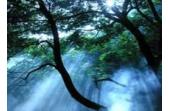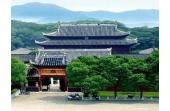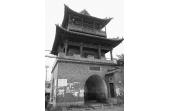Four Towers In Early Qing Dynasty
- Things to do
-
- Photo(10)
- Tips&article(100)
- Make it Happen
- Map
-
loading...
There are 2 Buddha and 8 Bodhisattva in the temple. Tiandi Buddha, commonly known as Huanxi Buddha, is a statue of a connected figure that a man and a woman is hugging, which symbolizes the co-existence of heaven and the earthly world. In the Tianwan Palace, Maitreya Buddha, the Four Gods (in Chinese they are called Tianwang), Weituo are enshrined there.
The pagoda ,with a height about 21 meters, is at the northeast corner of the temple, which is composed of 3 parts: the pedestal, tower body, phase rotation. The pedestal is a waist-contracted square Xumi throne on which designs of passion flowers were carved. On the two sides of the pedestal and the kettle-model door, stone pillars stand, which are also carved with design of Yangfu lotus and Baolian lotus.
On each side of the pedestal, 3 kettle-model doors are formed between 2 stone pillars. The middle one, which is embedded with treasure basin and flame pearl, is a bit convex, while the other two are slightly concave. On the pedestal, there is a 3-layer round altar throne, on which 13 stories brick-made temple body stands, with each storey tightens in.
On the top of the temple are precious summit and flagpole.
The east, south, and north tower were renovated in the 1980s. The west tower was dismantled in 1968 because it was too dilapidated. The palace underground was discovered when people dismantled the west tower, they unearthed lots of historical relics. In 1998, West tower and Yanshou temple were rebuilt.
West tower is 26.33 meters high, and its pedestal occupies an area of 256 square meters. Yanshou temple occupies a total area of 4000 square meters, in which Shanmen hall, Tianwan (heavenly kings) hall, Main Buddha hall, and the west and east attached halls takes over 800 square meters. The richly ornamented buildings in the hall make it look unsophisticated but splendid.
Besides the above mentioned, since 1985, the Historical Relics Preservation Office of Shenyang City has built a monument forest in the Beilun Temple, so far they have collected over 100 stone monuments, of which the oldest one is that of the Chenghua period in Ming dynasty, the latest one is that of the Manchukuo period. After renovation, most of these monuments erect in the monastery now, they are silently narrating the turns and swifts of history.
East tower: you can go there by bus No.230, or by trolley No.13 West tower: by bus No. 328 or 204 North tower: by bus No. 328, 325 or 217How to Get to there?
Tips & articles
|
|
|
forum discussion
|
|
|












